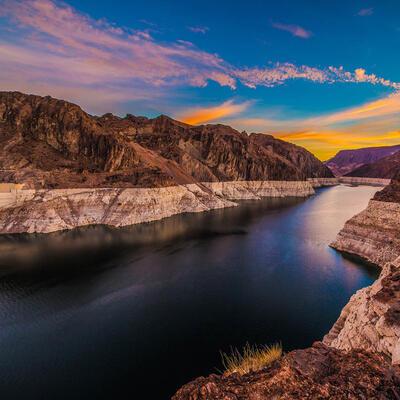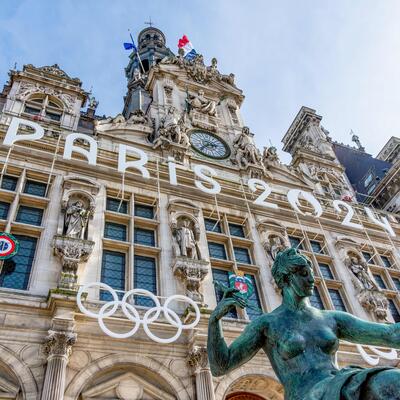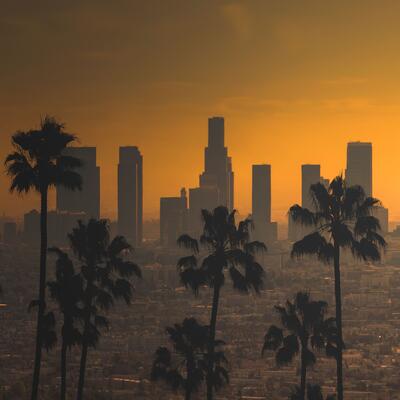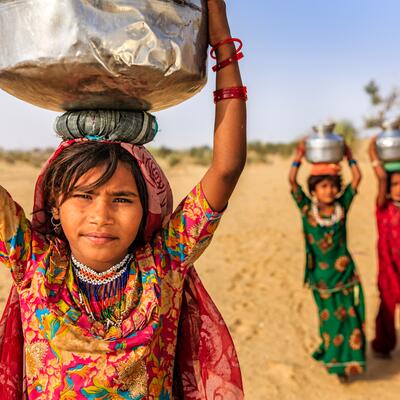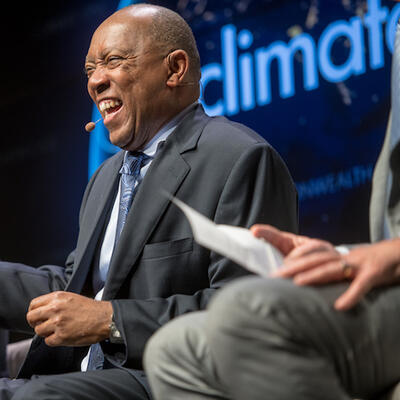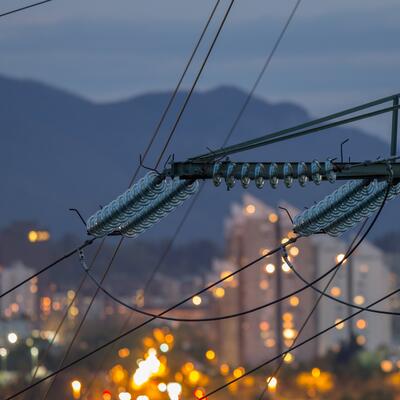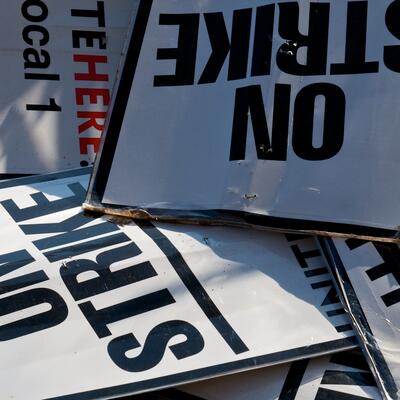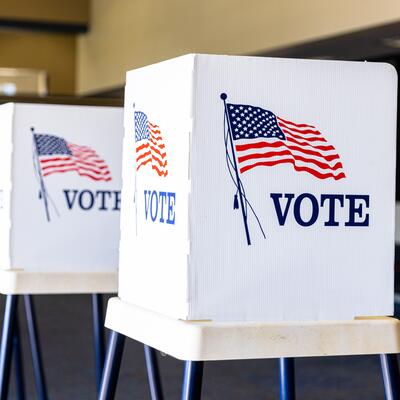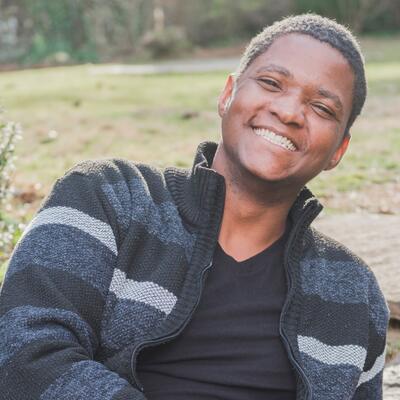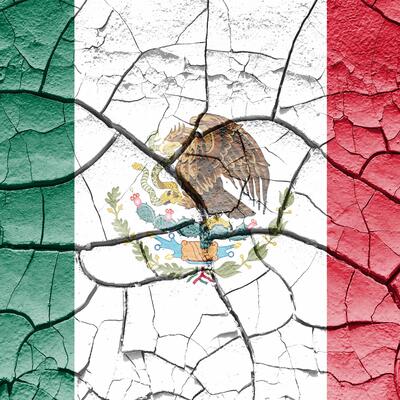
Thirst Trap: When Big Cities Run Dry
Guests
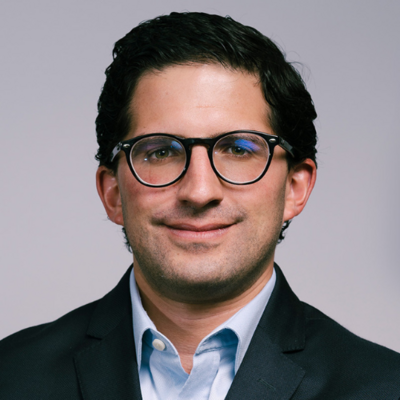
Oscar Ocampo
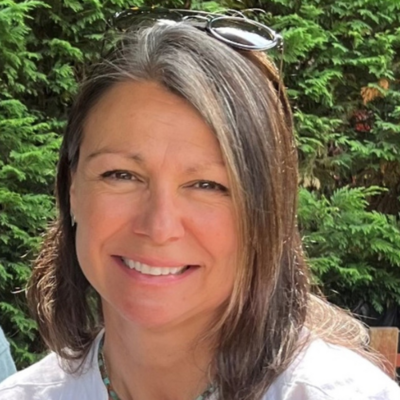
Christine Colvin
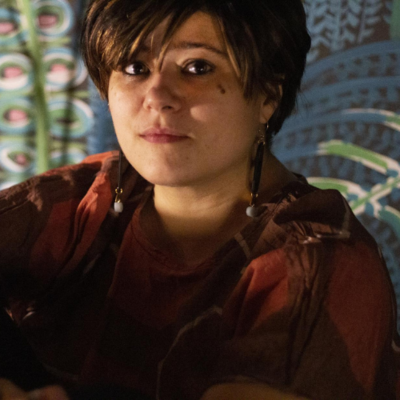
Alana Casanova-Burgess
Summary
This week we take a trip to Mexico, a petro-state that just elected climate scientist Claudia Sheinbaum as its next president. She’s also the former mayor of Mexico City, the largest city in North America, which has been going through a major water crisis due to climate change. It’s at risk of running out of water – and it has been for a long time.
One of the main sources of water for the city is a single system of reservoirs that has been running dry because of drought. But this used to be a water-rich area. The Aztecs built the original city on lake beds, and they engineered a complex system of canals and aqueducts to manage water. The Spaniards destroyed that and built a new city on the ruins of the old city. As the population grew, the city started pumping water from underground aquifers to supplement surface reservoirs. The groundwater is being used faster than it can be refilled naturally, which means that the soil underneath the city has been compacting. The city is actually sinking by several inches every year. And low rainfall and hotter temperatures have only made the water crisis worse.
Oscar Ocampo with the Mexican Institute of Competitiveness says water, rather than climate, was a top concern in the recent election.
“If you ask a Mexican, ‘do you think climate change is a threat?’ They'll answer yes, of course. If you ask a Mexican, ‘list the top five issues of the country,’ none of them will likely include climate in those issues. They likely say public safety, drug-related violence, corruption in government, the poor education system, the state of the health system,” Ocampo says. “Given the other quite big issues Mexicans are facing, climate ends up being a secondary issue for the most part.”
Christine Colvin, a hydrogeologist with WWF International, was in Cape Town, South Africa, in 2018, when the region experienced a megadrought. The city was approaching Day Zero -- when it would no longer be able to supply water to residents. Colvin says that of all the ways climate disruption impacts our lives, the most critical may be to our relationship with water.
"If the climate crisis is a shark, then water are its teeth. This is the thing that’s really going to bite us first and hardest," she says.
“The way that many people are going to experience the climate crisis is going to be through both droughts and floods. With a hotter atmosphere, there's more energy in the atmosphere. So that means that we are going to get more violent and volatile storms.”
But some cities are adjusting to these new challenges: They are dealing with water’s increasing scarcity by reusing it and reconnecting natural systems to better handle major storms and flooding.
In many areas, Colvin says, managers are getting better at getting water back into the underlying aquifers. “The main thing is to try and slow the flow of water through the city, retain it for as long as possible, linked to living infrastructure, to green infrastructure, to nature based solutions, and living elements of the city, which we know make people who live in cities much happier anyway,” Colvin says.
Episode Highlights
01:30 – Mexican city residents on the water crisis
08:00 – Frustration around current water crisis
10:00 – Oscar Ocampo on Mexican oil history and present
12:00 – AMLO’s views on oil production
16:00 – Claudia Sheinbaum’s approach to oil and climate policy
22:00 – Mexicans don’t trust public water supply
28:30 – Droughts and water crises in other Latin American countries
34:00 – Climate disruption impacts on water and hydrologic cycle
40:00 – Christine Colvin on living in Cape Town during megadrought water crisis
46:30 – Lasting impacts of the water crisis on Cape Town residents
50:00 – Adaptation strategies among cities to improve water supply and resilience
Resources From This Episode (3)
Full Transcript
Note: Transcripts are generated using a combination of automated software and human transcribers and may contain errors. Please check the actual audio before quoting it.
Alana Casanova-Burgess: I'm Alana Casanova-Burgess.
Ariana Brocious: I'm Ariana Brocious. And this is Climate One.
Alana Casanova-Burgess: And on today's show, we’re looking at a pivotal moment for one of our neighbors… Mexico.
Ariana Brocious: Yes! They just elected a new president: Claudia Sheinbaum. She’ll be the first woman to ever lead the country — and she’s a legit climate scientist! I don’t know which of those two facts is more amazing.
Alana Casanova-Burgess: Yeah.
Ariana Brocious: Especially given that Mexico also used to be one of the world’s top oil producers…
Alana Casanova-Burgess: Yeah and she’s also the former mayor of Mexico City – this massive city, the largest in North America, which has been going through a major water crisis due to climate change. It’s at risk of running out of water – and it has been for a long time.
Ariana Brocious: Right, to me, it seems like a moment when climate and politics are really colliding. And it makes me wonder, if people thinking about these things as being connected? Drought, fossil fuels, climate… and leadership?
Alana Casanova-Burgess: Exactly. I wondered that too. [start bringing ambi up]
Background: Con los mejores precios puede…
And, as it just so happens… I was in Mexico City recently, and I had my recording kit…
Alana Casanova-Burgess: Hola, cómo está? Mi nombre es Alana Casanova, estoy visitando desde nueva York soy periodista y trabajo por…
Alana Casanova-Burgess: And I should say, right at the top here, this is an incredibly informal, unscientific survey of public opinion… I went to a little park right near the center of the city, Plaza San Juan, to chat with people on their lunch break.
Jose Luis Bautista: Ah, estamos en el centro de la ciudad de México. (start fade) Estamos exactamente en la calle de ayuntamiento. Este se la colonia centro, la ciudad de México. Sí.
And one of the first people I met was Jose Luis Bautista, he's 55, he's got a shoe shine kiosk on the corner there.
Jose Luis Bautista: Vea los garrafones de agua.
Todos están comprando garrafones de agua
Alana Casanova-Burgess: And right away, he pointed out someone carting garrafones de agua — big bottles of drinking water — past us.
Ariana Brocious: Because nobody drinks water from the tap?Alana Casanova-Burgess: Right, Water from the tap mostly isn't safe to drink and hasn't been for a while. Where Jose Luis lives, in Ecatepec, he’s lucky that they’ve not had their water shut off, but it sometimes comes out of the tap very very dirty.
Jose Luis Bautista: O sea que nosotros somos afortunados porque sí tenemos, sí, tenemos agua a nosotros y hay veces que sale pero muy sucia, muy demasiado sucia sale el agua
Jose Luis Bautista: si. Lavaba tu ropa en la lavadora, pues toda es agua reutilizarla para lavar el piso (fade down under me) para, no sé, para para lavar este los patios, lavar tu propio carro. Yo creo que todo eso sería reutilizarla.
Ariana Brocious: So what do they do?
Alana Casanova-Burgess: When it's dirty, they buy bottled drinking water. And they're really careful to reuse everything. Like, they save the water from their washing machine to wash their floors.
Ariana Brocious: That sounds incredibly hard. To compare that to what’s going on in the US: I live in Tucson, in Arizona, which is a desert city that depends mostly on Colorado River water, which is in crisis. The city uses reclaimed water for golf courses and parks. But that situation is so much worse.
Alana Casanova-Burgess: Actually, Jose Luis really wanted to know how things are going for us in the States, whether we have droughts too and how we're handling it.
Jose Luis Bautista: Tú vienes de estados unidos?
Alana: Sí,
Jose Luis Bautista: bueno, ustedes tienen sequia allá?
Alana Casanova-Burgess: And yes, this drought that's affecting roughly 60 percent of Mexico doesn't stop at the border. There are counties in Texas that have water restrictions to cope with low water levels, and there's a disagreement between the US and Mexico about how to share what little water there is in the Rio Grande.
Ariana Brocious: Right, we have lots of similar climate challenges, the US and Mexico.
Alana Casanova-Burgess: For example, Jose Luis brought up wildfires in the US, that's happening in Mexico too. And they're in a heat wave, like the one we just had over the Fourth of July weekend.
Jose Luis Bautista: Hubo este quemazones en todas partes ahí mismo. Ustedes en estados unidos tuvieron mucha quemazón aquí en México también.
Ariana Brocious: Did he connect that to climate change?
Jose Luis Bautista: En toda parte del mundo está pasando cosas muy, muy este muy muy extremas.
Alana Casanova-Burgess: Yes, he brought it up right away. How there's extreme weather all over the world, and how everyone is hoping that it rains enough to refill the reservoirs, which are very low right now.
Jose Luis Bautista: Nosotros mismo. Estamos originando toda esta sequía, esperemos que que que llueva bastante no pa que se vuelvan a llenar las presas.
Ariana Brocious: Can you talk a little more about what's happening with Mexico City's water infrastructure, and these reservoirs he just mentioned?
Alana Casanova-Burgess: Yeah, there are two overlapping problems here. One new and one very old.
[music enters]
One of the main sources of water for the city is a single system of reservoirs that has been running dry because of the drought -- water levels have been at historic lows.
But this used to be a water-rich area. The Aztecs built the original city on lake beds, and they engineered this complex system of canals and aqueducts to manage it all. The Spaniards destroyed it, and built a new city on the ruins of the old city. And you can see this especially in the city center, as you're walking around, there are parts of old Aztec temples right next to huge cathedrals.
Ariana Brocious: That’s amazing, to see that history all around you.
Alana Casanova-Burgess: Exactly! But there's another thing you can see -- which is that the city is actually sinking by several inches every year. And that connects back to water – because as the city's population grew, getting water became a bigger challenge. So the city started pumping it up from underground aquifers to supplement those surface reservoirs I mentioned, I read that something like 5 million Olympic-sized pools of water have been pumped up every year for the past ten years because of the increased demand. The groundwater is being used up way faster than it can be refilled naturally. and that has meant that the soil underneath the city is compacting. And the low rainfall and hotter temperatures have made that problem worse.
Ariana Brocious: That’s a mind-boggling amount of water. And it’s also nuts that you can see it sinking? Like you can see it subsiding?
Alana Casanova-Burgess: Oh yeah, there are streets are kind of uneven. There are buildings that are sort of leaning, like the big cathedral. The opera house has sunk a lot. The airport runway is especially bumpy, actually. Some parts of the city have sunk by like 20 inches in the past twenty years. And that's really jarring but it's sort of this physical manifestation of what you can't see — which is that this is a very very dry city.
Alana Casanova-Burgess: And it has affected neighborhoods differently. For example, I spoke with someone who gets running water at home once every EIGHT DAYS. This is Jazmin Vazquez Martinez.
Jazmin Vazquez Martinez: ahí donde yo vivo, siempre ha sido así. Y antes, pues era peor porque era cada 15 días.
Alana Casanova-Burgess: And it used to be even worse -- she used to get water once every 15 days.
Ariana Brocious: Oh my gosh.
Alana Casanova-Burgess: She lives in Los Reyes-La Paz, which is on the far eastern edge of Mexico City. She works at a store near this park. And she knows that there are neighborhoods that get water every day, and people there don't have to save water like she and her family do.
Jazmin Vazquez Martinez: En otras partes, pues la gastan mucho y pues otras gente gasta y nosotros pos tratamos de cuidarla
Alana Casanova-Burgess: And it's been like this her whole life. She's 25, and she remembers when she was little her mom would get up very early in the morning to fill up containers because there wouldn't be water the rest of the day.
Jazmin Vazquez Martinez: Pues sí, porque yo me acuerdo cuando estaba chiquita, mi mamá se tenía que parar en la madrugada para poder llenar porque se era la hora en el que caía el agua durante el día no caía nada.
Ariana Brocious: So why does she think the water situation is getting so bad?
Alana Casanova-Burgess: Yeah, the drought is definitely tied to the warmer temperatures. But she also tied it to government mismanagement, which was certainly a theme with everyone I spoke to. Her fear is that this is going to lead to privatization, and that water will just be for people who can pay for it.
Jazmin Vazquez Martinez: porque si te has dado dado cuenta, pues últimamente has sido demasiado calor. Pero pos, por una parte, también por volvemos a lo mismo, los gobiernos y todo eso.
A raíz de eso, yo siento que es donde se agarran y es como de ya no hay agua, hay que privatizarla y quien tenga para pagarla, igual, y que no..
Ariana Brocious: So what do you make of that? That so many people told you they didn’t trust the government’s response?
Alana Casanova-Burgess: I mean, this area has struggled with water for a really long time – this most recent drought is the most severe but I think people are frustrated that more hasn’t been done to prepare. I chatted with a family from San Pablo de las Salinas, which is in the state of Mexico, north of Mexico City. Pablo Gomez, the dad, really got in the weeds with me on water infrastructure.
Pablo Gomez: de verdad lo que necesitamos es sistemas de captación de agua, (fade the rest down under me so he's still nerding out about water systems)
Alana Casanova-Burgess: He really thinks there needs to be systems to catch rainwater, because it goes into the drains and mixes with sewage, which just doesn't make any sense in a place with such a severe water shortage all the time.
And he was also really frustrated because in his community they lose a lot of water to broken pipes -- and his town… which is nearly 30 miles away… they rely on the same reservoir system as Mexico City does. The infrastructure is working against them. (end his chatter under me so this next line can be in the clear)
Alana Casanova-Burgess: That morning, before we talked, it HAD rained just a little bit – like a drizzle. And he was just praying the rains continued, because he said without water there's no life.
Pablo Gomez: Si no tenemos agua, pues no hay vida, o sea este ahorita, gracias a Dios, nos están enviar un poco de lluvia, no,
Ariana Brocious: So is he excited to see Claudia Sheinbaum take office?
Alana Casanova-Burgess: Yeah. He’s hoping that the new administration leads on a transition away from fossil fuels – he was really clear about that – and towards renewable energy, because otherwise all this is going to get worse otherwise.
[music enters]
Ariana Brocious: So given Mexico’s history of oil production, and this current drought… which is amplified by climate warming emissions caused by burning oil… I’m wondering how much the idea of moving away from fossil fuels was central to Claudia Sheinbaum’s campaign, and her larger climate agenda is going to be, if she has one.
Alana Casanova-Burgess: So, that's where we’re going to go next in this episode – to Mexico’s climate goals. Oscar Ocampo is the coordinator for energy at the Mexican Institute for Competitiveness, and he’s been thinking about this tension, too. We started off by talking about Mexico’s oil industry – at one point, he said, it was one of the world’s major oil producing countries.
Oscar Ocampo: In 2004, we used to produce more or less 3 million barrels per day. Now we hardly produce 1.6 million barrels per day. but it's still a major source of funding for the Mexican government. It's more or less depends on the year between 15 to 20 percent of Mexico's federal budget comes from the oil rent.
Alana Casanova-Burgess: Because it's a state-run oil production.
Oscar Ocampo: For the most part, it's a state-run oil production. And still, because of taxes, the Mexican government gets a big chunk of oil revenue.
Alana Casanova-Burgess: And so how do Mexicans feel culturally about oil? Like what's the relationship that you all have?
Oscar Ocampo: It has changed over time. In the 1930s, it used to be a big deal for Mexicans, oil nationalism.
Alana Casanova-Burgess: Yeah, I had heard a little bit about that, that in school, Mexicans, even in, like history textbooks, learn about the 1938 nationalization of the oil field.
Oscar Ocampo: Exactly. And I guess you still learn it in school, but it was part of the education system when you were in primary school, in elementary school, you used to reading in textbooks about the nationalization. So it also became like a cultural symbol, it had a powerful, a cultural, social symbolism beyond the economics, beyond the politics.
Alana Casanova-Burgess: So for the outgoing president, López Obrador, who is known as AMLO in Mexico, he's been kind of thinking about oil in this outdated way. Right? Sort of like, as though he's still in the 70s, as though it really, really matters.
Oscar Ocampo: Exactly. In the end, President López Obrador has been in the search of lost time, but you cannot, there are no time machines. The world has changed. Mexico has changed. The Mexican economy changed, and now, well, the oil markets, the oil sector, well, it has also changed. So you cannot expect to be successful with the policies that were successful 50 years ago. But yeah, in the end, you have to understand the biography of President López Obrador. He grew politically in Tabasco, which is a state in the Gulf of Mexico, a major oil producing region. He thinks that it's a, a national security issue that Pemex, the state oil firm, it controls the sector. So, so in, in, in the end, oil is really close to President Lopez's heart, and that's something nobody was able to change. So it's an integral part of his ideology, of his politics, of his economic vision.
Alana Casanova-Burgess: So for the past six years, he's been really clinging to oil. And I've been reading about this tension in Mexico between energy independence, right, this sort of oil nationalism that you're describing, being self-reliant, you know, not having to go to the U.S. or outside the country at all for energy. And then that there's tension between that and getting off of fossil fuels and meeting climate goals. So what's going on there?
Oscar Ocampo: Well, there is indeed tension, not in the federal government, because for the federal government, this idea of energy independence, energy sovereignty comes first, the energy transition comes second. That's crystal clear. However, there is this tension because, of course, the federal government doesn't live in an isolated milieu. So, in the end, Mexico has its climate commitments in the Paris Agreement, in its national legislation. And at the same time, the President López Obrador's energy policy goes against those objectives, not only because of this reliance on oil, but also because he has or his administration has blocked projects of a renewable power generation, for example, not because the administration is against a renewable energies per se, but the administration is against competition from privates to a state companies. So in the end, they end up being against renewable energy.
Alana Casanova-Burgess: So there hasn't been much innovation in renewable energy from the federal government.
Oscar Ocampo: No, in the end, Mexico's state owned utility, the Federal Electricity Commission, they have developed some projects on solar, for example, but it's not even close to what the country needs. In the end, before 2019, Mexico's power generation matrix was a growing, its renewable generation matrix was growing at a very reasonable pace. And it has significantly slowed over the past years.
Mexico's goal was 35 percent renewable by 2024. And now Mexico's clean renewable generation is around 22%.
Alana Casanova-Burgess: You're not, yeah, you're not gonna make it by the end of the year.
Oscar Ocampo: Not even close, to be fair with the government, the droughts also affected because Mexico in a regular year used to generate around 10, 11, maybe 12 percent of its power generation, uh, to hydros. However, given the –
Alana Casanova-Burgess: hydroelectric power, which, you kinda need some water for that.
Oscar Ocampo: Exactly. So, now hydros represent more or less five, 6% of the, of the power generation matrix. So, okay. We lost some percentage points there.
Alana Casanova-Burgess: So, you've been describing this sort of petro nationalism with López Obrador, the outgoing president. He's been in office for six years. What about the incoming administration of Claudia Sheinbaum? What does she want to do?
Oscar Ocampo: Just to contextualize, Claudia Sheinbaum was the mayor of Mexico City for the past six years, She has been close to Lopez Obrador for decades. So in the end, continuity won the election. However, regarding energy policy and climate policy, there are differences. Why? Because Clara Sheinbaum has an interesting background in climate research, in energy research.
Alana Casanova-Burgess: Yeah, she's a climate scientist.
Oscar Ocampo: She spent some time at the Berkeley National Lab doing climate research. She was part of the IPCC, uh, a panel that won the Nobel Prize, uh, due to the research on climate change. So she cares deeply about reducing emissions. She cares deeply about the energy transition. At the same time, she shares the President's vision of, let's say, energy nationalism. Yet again, she's a climate scientist, and she's well aware of the needs to reduce emissions, of the needs of expanding the power generation matrix, and at the same time of the constraints of the Mexican government, because the Mexican government at this moment has a reasonably high deficit. Interest rates remain high, so they don't have that much room for maneuver to invest in power generation or in renewable energies. So the incoming government, they're well aware that they will have to be more open for business than the Lopez Obrador administration. If they want to accelerate the energy transition, if they want to meet the country's climate objectives. So while they, while they share most of the vision, the means to achieve this vision are likely going to be different than what we have seen over the past six years.
Alana Casanova-Burgess: Was this a big issue in the election? Was it talked about in debates? Were people really engaged?
Oscar Ocampo: No, not at all. It was mostly a non issue.
Alana Casanova-Burgess: You have a climate scientist as your president elect and it didn't come up in the election?
Oscar Ocampo: Now in the end, climate in Mexico is a second or even third tier issue because you have a public safety. You have the economy. You have corruption. You have the health system. You have education. So in the end, Mexicans don't have time to think that much about climate when electing a president. So it was, for the most part, an absent issue during the campaign season and in presidential debates.
Alana Casanova-Burgess: I saw some figures actually about public opinion that Mexico has one of the highest percentages of citizens worried about human caused climate change. That's 92 percent, which is compared to 63 percent in the U.S. I'm not really that surprised that it's so low for us, I suppose. But do those figures ring true to you in Mexico?
Oscar Ocampo: Absolutely. I mean, in Mexico, we don't have this debate, whether climate change was man made, man caused or, or if it's non existent, this is really not an issue in Mexico, but yet again, climate is not something we talk about in Mexico. It's not on the agenda. It's not in the news. Mexicans care about it. Yes, of course. If you ask a Mexican, do you think climate change is a threat? Yeah, they'll answer yes, of course. If you ask a Mexican, list the top five issues of the country, none of them will likely include climate in those issues. They likely say public safety, drug related violence, corruption in government, the poor education system, the state of the health system. So, so in the end, given the other quite big issues, the Mexicans are facing, climate in the end ends up being a secondary issue for for the most part of Mexicans.
Alana Casanova-Burgess: Yeah. And, even though most of the country is living through a drought. There's this water crisis in Mexico City and surrounding areas. So, but that doesn't make it like front of mind?
Oscar Ocampo: Well, no, when you cannot go to the street safely, when you cannot travel through highways, when you cannot get a medical appointment, when you cannot go to school, quality education. I mean, of course you care about the environment. I'm not saying mixers don't care, they do. But in the end, in the pyramid of needs, climate ends up being not at the top and reasonably so.
Alana Casanova-Burgess: So, maybe climate isn’t a priority for Mexican voters. But in the face of a disastrous drought, water sure is.
Oscar Ocampo: Water at the local level was more important than ever. The question, okay, how are you going to fix this situation?
Alana Casanova-Burgess: We’ll have more of my conversation with Oscar Ocampo when Climate One continues.
Ariana Brocious: Please help us get people talking more about climate by sharing this episode with a friend. And we’d love to know what you think of the show. Please give us a rating or review. You can do it right now on your device – and it really helps people find the show. Thanks!
Alana Casanova-Burgess: This is Climate One. I’m Alana Casanova-Burgess. While I was in Mexico City, I got to eat amazing food and gawk at the gorgeous architecture – and even enjoy the bike share system. But I could see signs of the water crisis everywhere. where I was house-sitting, I was very lucky to never have to question the supply, and yet when I stepped out, I saw trucks delivering water to buildings and public fountains turned off. Oscar Ocampo says while some big parts of the city have suffered from water shortages for decades because of poor infrastructure, this is the worst, most widespread water crisis in recent memory.
Oscar Ocampo: Now, it was a democratic crisis. Rich households suffered it. Poor households also suffered. Middle class households suffered it. So yeah, this was a different crisis. Most households had some kind of water rationing, for example, from, I don't know, from 6 a.m. to 10 a.m., you can use water, then they'll shut down until 6 p.m., and then they'll shut it down again at 10 p.m., and that is new. That's something Mexico City or most of Mexico City inhabitants hadn't experienced before.
Alana Casanova-Burgess: Is it also an economic issue? Because if you have to buy bottled water, or you have to, let's say dirty water is coming out of your tap and you don't feel comfortable using it for even washing your dishes and you have to buy all this water, doesn't that become onerous, especially for low income people?
Oscar Ocampo: Well, definitely Mexicans spend quite a lot of money in water that they shouldn't be expending. In water trucks, in bottled water. Mexico is the largest bottled water consumer in the world, which is an interesting thing here. There's a cultural explanation because Mexicans love bottled drinks like Coke. Mexico is also the world's number one per capita Coke consumer.
Alana Casanova-Burgess: Yeah, you've got that you've got that delicious sugarcane Mexican Coke. Everybody knows about that.
Oscar Ocampo: Yeah. However, most Mexicans don't drink that one because it's a crystal bottle. And if you go to any store, you'll find the bottle, a Coke, which is more similar to the U.S. to the American Coke.
Alana Casanova-Burgess: Ah, okay.
Oscar Ocampo: But yeah, Mexican Coke is fantastic. I fully agree with you and I buy it every time I'm able to. But yeah, Mexicans spend a lot of money in bottled water because, as I was saying, cultural patterns, shopping habits, yes, but also because they don't trust the water systems. They don't trust that the water they're going to get if they drink tap water is healthy. And this is an interesting issue because not all of the water is unhealthy to drink. I personally drink quite often tap water and I have never had an issue. However, you don't know. You are not able to measure the quality of water. You don't know if the tap water you're drinking is safe or not. So, better not to take the risk and just go the safe way and, and buy bottled water. But here's another cultural issue. In the end, it's cheaper to install a filter, but most Mexicans don't have filters. They just go to the store and buy a bottle of water. So yeah, it's an interesting sociological, anthropological discussion there.
Alana Casanova-Burgess: You mentioned that some neighborhoods in Mexico City have been going through water shortages for years now. I read something like 60 percent of the country is going through a drought. Can you give us the bullet points of what the causes are?
Oscar Ocampo: Well, cause number one is a well, from a macro perspective, climate change has increased the intensity and the frequency of droughts. That's a fact. Second, this drought was more intense because of El Niño, this climate phenomenon that El Niño in 2023 and 2024 was more intense than in other years. Third factor, the poor state of water infrastructure in Mexico. Okay, El Nino and climate change, let's say they are beyond governmental control. There's nothing they could do against that, However, Mexican water infrastructure is in an extremely poor state. For example, pipelines in Mexico City can be as old as 50 years. So, in the end, a lot of water is lost because of the poor infrastructure or the poor state of infrastructure.
Alana Casanova-Burgess: When you say a lot, how, how much?
Oscar Ocampo: Just to illustrate this in Mexico City, somewhere around 30 to 40 percent
Alana Casanova-Burgess: 30-40%.
Oscar Ocampo: They don't even have the exact figure. Nobody has exact figure, but it's around the ballpark of 30 to 40%. Well, that's a big deal. And the final issue is even though in Mexico regularly we get a lot of rain, we don't have rain collectors, rainwater collectors, we don't treat water. A very tiny fraction of Mexico's water is treated. So, well In the end, we have the drought, we have climate change, we have El Niño. But at the same time, We didn't invest in infrastructure, we didn't invest in water treatment. We didn't invest reinjecting water to aquifers. We didn't invest in rainwater collectors. So it's a mixture between these two factors. Climate change and poor policy making in, in, in the water sector.
Alana Casanova-Burgess: So maybe this would've been a bad situation, but maybe not a full blown crisis if there had been a little bit more, I don't know, infrastructure preparedness.
Oscar Ocampo: Exactly.
Alana Casanova-Burgess: There was tons of news coverage about the idea of Day Zero. Both, you know, I read it here in the U. S., I know that this was obviously something you were all talking about. June 26th as the day when Mexico City would run out of water if it didn't rain. It did rain, so Day Zero didn't or hasn't yet come, but is that concept real in your opinion?
Oscar Ocampo: I'm going to quote the classic, that was fake news. And that was fake news created by the media. Nobody in government, not once, spoke about Day Zero. And there is a good reason for that. Well, in the end, for media, for newspapers, and for websites, and from news anchors, well, it made a whole deal of sense to talk about Day Zero because people were engaged. They clicked the news. They read, they visited their websites. However, it was never real because the idea of day zero is when a water system is unable to provide water to its population, being a municipality, being a city, being a state. And that was never a real scenario for Mexico because the Mexican Day Zero was that the dams that supply greater Mexico City would be empty and would be unable to supply water to Mexican households, to Mexican businesses, when we were all in Mexico City. However, this is only 20 percent of Mexico City's supply. The other 80 percent comes from underground waters, comes from other rivers. So, the risk was that 20 percent of the water supply would be compromised, which is of course bad news, but it's not catastrophic. So in, in the end, this was quite irresponsible for the media that they just started talking about day zero here and day zero there, but the government was the first one to say. There is no going to be a day zero. And again, of course, Mexicans don't trust government. So let's say a regular citizens didn't believe the government.
Alana Casanova-Burgess: Right. They're like, they're definitely going to be a day zero.
Oscar Ocampo: They believe the media. So yeah, I think this was poor journalism.
Alana Casanova-Burgess: So we're talking about Mexico City, but a lot of Latin America is going through a water shortage crisis. Argentina has a big drought too, the Panama Canal has been historically low to the point where it's affecting global trade and contributing even to inflation. So what do you know about this problem in Latin America more broadly?
Oscar Ocampo: Well, in, in the end, it's a big issue at, at the regional level, as you were saying, the Panama panel, it's impressive to see the low levels of water. So, and then it's a shared issue. There are countries that have been, that were more prepared to address this issue. For example, Chile, Chile, which is for the most part a desertic country, they have been very efficient, a managing water systems, reducing the footprint of agriculture, for example, while Mexico consumes a 75 percent of its water in agriculture in Chile, only 60 percent of water goes to, to agriculture. And this doesn't mean that they are not big agricultural producers. They are.
Alana Casanova-Burgess: They are just a little smarter about it because they're in a desert, or mostly a desert.
Oscar Ocampo: Exactly. Because they have to be more cautious with their water systems. Costa Rica also has a very efficient water systems. Uruguay has also very, very efficient water systems. In the end, those are the, let's say, the poster childs of water efficiency. And in the end, Mexico has a lot to learn from those success stories.
Alana Casanova-Burgess: Is that happening?
Oscar Ocampo: Well, I think that slowly, Mexico is a and this recent world crisis has, has made every government aware of, of the relevance of investing in world infrastructure. Although I told you a few minutes ago that climate was a secondary issue of the presidential election. Water at the local level was more important than ever. And, for example, in the debates for the mayorship of Mexico City, water was a central issue. The question, okay, how are you, how are you going to fix this situation? And more or less, all three candidates, they were, they had more or less the same proposals, you know, water treatment, rainwater collection, improving the state of infrastructure. Some more, some less, but they all were pressured to go serious into water policy. And that is new. That's something we didn't see in previous electoral cycles.
Alana Casanova-Burgess: But in order to get out of a water crisis, I mean, You need to have a sense of collectivism, of coming together, of finding a solution. Yeah, so, so what do you, what do you do?
Oscar Ocampo: Well, I don't have a proper answer there, but it will be a major challenge because, of course, you need government, but you also need private sector. You also need society. In the end, this is a textbook example of a collective action problem.
Alana Casanova-Burgess: Oscar Ocampo is the coordinator for energy at the Mexican Institute of Competitiveness, IMCO. Thank you so much, Oscar. Thank you for joining us on Climate One.
Oscar Ocampo: My pleasure. Thanks for the invitation.
Ariana Brocious: Coming up, what it was like living in Cape Town, South Africa, when the city nearly ran out water:
Christine Colvin: Crises can bring people together as well and they can also stimulate innovation and you can find new opportunities right in the eye of the storm of the crisis.
Ariana Brocious: That’s up next, when Climate One continues.
This is Climate One. I’m Ariana Brocious. Mexico City isn’t the only major metropolis facing a water crisis. In fact, it’s a problem in cities big and small everywhere.
Christine Colvin is a hydrogeologist with World Wildlife Foundation International. For nearly a decade, she led the freshwater program in South Africa, and she was living in Cape Town when the city faced the prospect of running out of water – almost completely. We talked about what that was like. And the ways climate is already impacting our water systems around the world.
Ariana Brocious: There was a headline in the satirical news site The Onion recently that said, Report, every place on earth has the wrong amount of water. Is that joke kind of true from your perspective as someone who's thinking about fresh water supplies around the world?
Christine Colvin: Yeah, I think it definitely stands up. I mean, within the water sector, we often say that when it comes to water, it's either too much, too little, or too dirty. So, you know, having that kind of Goldilocks amount of water, just the right amount that is clean enough to use, and clean enough for wildlife to live in as well is the Eden that we're trying to rediscover and recreate and regenerate and restore. And with the climate crisis, especially too much and too little water is definitely a big threat for the future and a growing threat and a bigger risk.
Ariana Brocious: So help us understand the connection between climate, increasing temperatures, longer droughts, bigger storms, sort of the factors that comprise climate disruption and how that affects water supply, particularly, water scarcity.
Christine Colvin: Well, another saying that we have is that if, if the climate crisis is a shark, then water are its teeth. so this is the thing that's really going to bite us first, and hardest. And the way that many people are going to experience the climate crisis is going to be through both droughts and floods. With a hotter atmosphere, there's more energy in the atmosphere. So that means that we are going to get more violent and volatile storms. It also means that there's more water in the atmosphere. With every one degree rise in temperature in the atmosphere, that means we can hold seven percent more water. so it shifts the whole hydrological balance of the planet to kind of make us a little bit different top heavy in terms of what we've been used to, with much more water moving around in the atmosphere and held in the atmosphere. And that means that some places are going to experience more droughts for much longer. And then for others, you know, when those droughts break or when we have extreme rainfall, the kind of rainfall that we're going to see is going to be beyond torrential which when that kind of rainfall is also falling on degraded land, you know, where we used to potentially have naturally forested mountainsides and hills that were the catchments for rivers and valleys, we've lost a lot of that now through, land use change and habitat change. So we've lost that natural resilience and coping capacity of our landscapes and catchments to cope with the kind of downpours that we're going to experience in the future.
Ariana Brocious: I want to talk a bit more in a few minutes about remedies for that. You know, the kinds of green structures, city design that can actually help address those challenges, but staying for a moment with kind of the challenge of water scarcity, There was a report from the United Nations this year, the World Water Development Report, which found that 2.2 billion people currently don't have access to safely managed drinking water, and that as of 2022, about half the world's population experienced at least temporary severe water scarcity. I don't know that I was even aware of the severity of this problem. when you put it in numbers that stark, which parts of the world are suffering the most, or places maybe we're unaware of having these water scarcity challenges?
Christine Colvin: Yeah. I mean, obviously in our least developed countries and in the developing world, that's where we're still most lacking services on the whole, to reach the general population. and often that is overlapping with the more tropical and semi arid areas where we're also seeing a lot of these climate extremes as well. Even within countries, you know, sometimes it's in the rural areas, but very often it's also in township areas. so informal settlements, shanty areas on the edges of cities, that's where people are really vulnerable, because they have very few choices. Whereas developing communities in rural areas often will have local methods of accessing water. There's often a long history of digging and building wells and then protecting that groundwater, keeping it safe for human consumption. But, you know, when people are moving into cities en masse and starting to live in informal settlements, there are very few options open. So you know, it's a widely distributed problem. And I think it is a shocking statistic, you know, that 2 billion people around the world are still experiencing water scarcity when this is our most populous city. basic and fundamental human need.
Ariana Brocious: One of the cities that's been in the news lately is Barcelona. And I think you were just there, so can you talk a little bit about what that city is experiencing and the sort of, additional pressures that the tourists bring in when they arrive in the summer?
Christine Colvin: Yeah. And I think that's, you know, an issue of not just a concentrated demand in terms of a spatial concentration, but you then also have these big peaks in demand for many of our holiday destinations. I mean, a big city like Barcelona is popular throughout the year, But, in summer, they will, they will have a spike in terms of visitor numbers and then visitor demand for water as well. And it's a similar story to that which we experienced in Cape Town and many other big cities that are experiencing water shortages with visitors coming. The city needs to protect its supplies. It needs to reduce demand. It needs everybody to be aware of not wasting water but at the same time, they don't want to scare visitors away. And in the case of Cape Town, it was also, you know, not always flushing the toilet even. And you know, this is then a big adjustment for a lot of people to make. If you've just flown in from a very clean and sanitized country where you are, you know, used to flushing the toilet all the time, and then an ask is being made of you to not do it. do that. It gets personal, gets personal very quickly.
Ariana Brocious: On your vacation, no less, right?
Christine Colvin: Yeah, exactly, exactly. you know, there are many parts of the world where we don't have flushing toilets. And it is one of the big challenges is something that the Bill and Melinda Gates Foundation and, and other people have really tried to crack this big does the toilet of the future look like? Because it simply can no longer be something that relies on nine liters of clean drinking water as a mechanism to transport human waste.
Ariana Brocious: Right.
Christine Colvin: That's not fit for purpose for a future where we're going to experience more water crises.
Ariana Brocious: Not to get too in the weeds here, but I've used composting toilets and when done well, they can be totally fine. You know, they are a good strategy. You mentioned Cape Town and I want to go there because you were living in Cape Town several years ago when that city was going through its huge water crisis. I think this was 2015 to 2018. Can you tell us? What led to the Cape Town water crisis?
Christine Colvin: Yeah, we had in Cape Town what's known as a mega drought. So normally, you know, if you have one year of bad rains in an area that experiences seasonal rainfall, then that might give you a drought year. But when you have one year after another, after another, those impacts start stacking up and accumulating. Then it starts leading to a mega drought, which is normally three years or longer. And so we had a three year long drought, and in the Western Cape in South Africa, typically rainfall comes in the cold winter months, falls in the high mountainous areas, the water source areas, on the outskirts of the city. And that then infiltrates into the aquifers and replenishes the dams that the city relies upon. And there's one big sort of main water system that supplies both the city and irrigation farmers in the Western Cape. So after three years of bad rains, the dam levels had got lower and lower and lower year on year. And this was a huge cause for concern because we hadn't sort of survived through a period of dam levels being that low with as many people living in the city of Cape Town. So it's a city of more than 3 million people, a coastal city. And that was a real challenge.
Ariana Brocious: So what was it like living there during that?
Christine Colvin: People reacted fairly predictably in first of all, expecting that somebody else would solve the problem. You know, this is a big problem. This is about water supply. That's the sort of things that engineers deal with. So we'll just wait for the engineers to fix it. You know, engineers are not very good at magicing rain and back into their dam. So, there were still things that they could do, but it, but it wasn't that, and, you know, as people start to get quite afraid, and I think we all did and wondering what is going to happen, you know, envisaging what happens when a city has to turn its taps off completely, you know, schools aren't working, hospitals aren't working, people can't get get to work. You know, it really feels like complete chaos, could be just around the corner if that were to happen. so people were very fearful of that situation, picturing riots in the street as people are queuing up at standpipes to get water, in the blazing sun. you know, how is that going to work? How are you going to maintain law and order in it? in a situation like that. But I think also as with many crises, crises can bring people together as well and they can also stimulate innovation and you can find new opportunities right in the eye of the storm of the crisis. And what the drought crisis in Cape Town did very fundamentally was it absolutely shifted everybody's relationship with water. So previously you just expect to turn on the tap and decent quality water comes out. When we were anticipating that not happening, we realized that we needed to really understand our water system much better. Think about what everybody could do to help to save water. because one of the sayings that we had in the midst of the drought was that we're not going to build our way out of this drought. We are only going to save our way out of this drought.
Ariana Brocious: And build your way by meaning develop more dams or drill wells or things like that.
Christine Colvin: Yeah. So, you know, at a small scale, we could build some things like reuse systems and gray water systems that could help, but at a big scale, we couldn't build anything big enough and fast enough that would bring enough new water into the system. but they could dramatically reduce the level of leaks escaping from the water system and all the reticulation around the city. So water pressures were dropped quite dramatically as a measure of leakage reduction. And there was a fast track program to, you know, start fixing up any pipes where there were any known or reported leaks. so the system itself was kind of dramatically improved. And again, you know, with the, the shift in focus and the fact that water became an organizing principle for the whole of the city, these things then became a priority. Whereas previously, you know, there might've been further down on the list of engineering jobs that the city had to address.
Ariana Brocious: And so the city was successful in saving its way more or less out, right? And then the drought ended, you were able to get, you know, the regular rains returned.
Christine Colvin: Yeah. Effectively. I think the closest moment that we came to was within a couple of weeks of the taps being turned off. And we had called, that day would be day zero. and day zero wasn't when the dams were dry. Day zero would be when I think it was still, 17 percent of water was left in the dams because that very last bit of water would be used just for hospitals and emergency services. But at that point, everybody else would have their water cut off and then we would have to get water from standpipes. So people would have been allowed 25 liters of water per person per day.
Ariana Brocious: And 25 liters for an American audience would be about six and a half gallons of water.
Christine Colvin: Not a lot of water when you're trying to cook and maintain a normal lifestyle. I think it also gave a lot of us who were used to having piped and tapped water in South Africa, a taste of what a big proportion of the South African population have to live with, which is going to fetch water every single day. Especially people living in informal areas and in the rural areas where they don't have taps in the house necessarily. And, you know, then you, you really do learn the value of water when you having to go and fetch it and carry it.
Ariana Brocious: Mm hmm. I'm curious. whether that shift in mentality has lasted, and I know you no longer live there, but, seems like humans have a tendency to respond in crisis, but then we quickly forget.
Christine Colvin: You know, there's always a bit of a bounce back. When the crisis is over and in Cape Town, you know, we were lucky that in the third year, the rains did finally come. Then there's, you know, a tendency to resort back to old behavior. But I do think in Cape Town, a lot of things have stayed in place, partly because people kind of rebuilt their homes in response to the crisis. So a lot of people put in recycling systems and systems that could, for instance, take gray water and use that on the garden, or reuse that in flushing toilets. A lot of people put in rainwater tanks, so that they would do their own rainwater harvesting at home and then use that for non drinking uses of water as well. And a lot of people also sunk boreholes on their property and started using water from wells and boreholes. Now that brings with it its own set of risks in that, you know, the aquifers, can get overdrawn. But I think in part because a lot of people spent money on their homes and changed the way that their homes use water and they want to continue using that investment. And I think that that process of both of diversifying different sources of water, both at the home scale and the city scale now, because now the city is using more recycled water and more groundwater as well. that has built some, some really, longstanding resilience into the water system for Cape Town
Ariana Brocious: It's really positive to hear an example of that, of that overall shift in designing homes and building systems, that is staying in place. Do you think there's a disconnect between asking people within their homes to shower less or maybe, take a break, from watering their garden or they're washing their car versus major industries and agriculture, which use vastly more water, you know, in the, in the scheme of things than people in cities do?
Christine Colvin: Yeah. I mean, agriculture still uses about 70 percent of water allocated globally. so that is where we really need to focus on,water use efficiency. We also need to be thinking about the kinds of crops that we're growing in different areas as well, you know, looking for more water efficient crops. And it's not only a choice between urban water users and agricultural water users, but also between what the natural environment needs in order to sustain its ability to keep providing us with water. So, previously, you know, we tend to look at, well, we'll use water where it's going to give the biggest return to the economy, normally in the short term, and generate economic growth. But I think that we're now at such a breaking point in many regions of the world where we actually need to start saying, we need to have more water allocated back to the environment, as part of restoring the flow of our rivers and wetlands, which are the life support system that underpins our water supplies in the first place.
Ariana Brocious: Yeah, I'm aware of some efforts to buy water rights and leave them in the stream, not ever divert them, right? Conservation groups that are trying to do that. So you had mentioned earlier on, possible ways that cities particularly, can adapt to this changing hydrologic cycle. Can you talk about the sponge cities, as they're called in China, and how those might be examples of doing this well?
Christine Colvin: Yeah. one of the issues that we face in cities is that we have so many, you know, it's all tarmac over, you know, we've got roads and we've got pavements and we've got hard buildings in areas where there were probably a lot of wetlands and many different tributaries coming into rivers. and, you know, wooded areas, different types of natural land cover. And the idea of sponge cities is about trying to kind of reconnect the water cycle through cities again, because many cities utterly break the water cycle, and things just get either. passed out of the city too quickly when it's stormwater and surface water, and then drawn in from a massive area for, for human consumption as well.
So the sponge cities are part of kind of greening cities again, softening the surfaces within cities and making more. permeable surfaces available for the natural water cycle to reestablish and particularly for infiltration from the surface that reconnects vertically, the different parts of the water cycle. So soil water is a hugely important part. And that's where just about everything that grows, you know, is going to get its water from. Groundwater is critical, it's the biggest single store of terrestrial water. 90 percent of fresh water that's stored on land outside of the ice caps is stored underground in groundwater. Aquifers could therefore be our biggest biggest allies in areas that experience water shortage. And during the climate crisis, they're also protected from evaporation, unlike big surface water dams. but they're not going to see us through if we've cut off the recharge from the surface. So, in many areas there's now much more managed aquifer recharge that's something that's been pioneered in Australia, in South Africa, in the U.S. as well, and something that the Chinese sponge cities are also trying to establish across broad areas so that aquifers are recharged. and within this, this whole sort of sponge city effect, the main thing is to try and slow the flow of water through the city, retain it for as long as possible, linked to living infrastructure, to green infrastructure, to nature based solutions, and living elements of the city, which we know make people who live in cities much happier anyway. So there are multiple benefits.
Ariana Brocious: Christine Colvin is Water Policy Lead for the World Wildlife Fund International. so much for joining us on Climate One, Christine.
Christine Colvin: Thank you. Great to talk to you, Ariana.
Alana Casanova-Burgess: And that’s our show. I’m Alana Casanova-Burgess, thanks for listening. Talking about climate can be hard, and exciting and interesting -- AND it’s critical to address the transitions we need to make in all parts of society. Please help us get people talking more about climate by giving us a rating or review. You can do it right now on your device. Or consider joining us on Patreon and supporting the show that way.
Ariana Brocious: Greg Dalton is co-host and executive producer. Brad Marshland is our senior producer; Our managing director is Jenny Park. Austin Colón is producer and editor. Megan Biscieglia is producer and production manager. Wency Shaida is our development manager, Ben Testani is our communications manager. Jenny Lawton is consulting producer. Our theme music was composed by George Young. Gloria Duffy and Philip Yun are co-CEOs of The Commonwealth Club World Affairs, the nonprofit and nonpartisan forum where our program originates. I’m Ariana Brocious.
